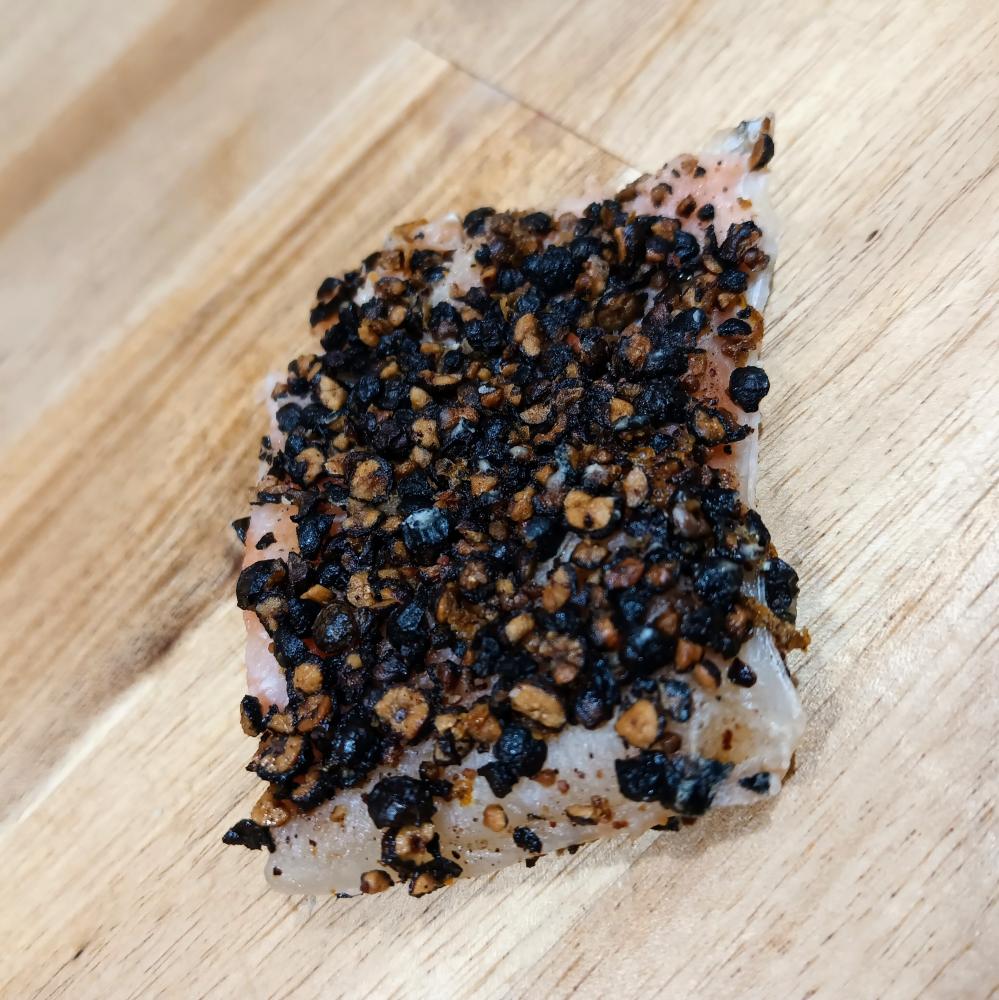You Did WHAT With Black Pepper???
But what if we tried really ramping up the way we use black pepper? In fact, what if we made it the centerpiece of our meal?
Introducing the Black Pepper Crust
Don’t let the name scare you off… black pepper crust is delicious, easy, and makes you look like an absolute kitchen genius. It works by cooking the pepper in a certain way to reduce its most extreme flavors, then using it to add floral notes and a glorious, crunchy texture to the outside of your favorite meats.I got this idea from America’s Test Kitchen, where they shared a recipe for slices of beef tenderloin with a black pepper crust, which they covered in a hollandaise sauce. It looked amazing, but I don’t like to drop money on beef tenderloin.
Instead, the last time I bought salmon, I cut off the extra thin portion and baked it with a black pepper crust. It ended up being my favorite part of the meal.
How Does it Work?
Once you’ve bought some fresh, whole black pepper, gently crush your kernels so that they’re still very coarse.After you’ve filtered out the small particles, cook the pepper in oil, which will get rid of the highly pungent qualities of the pepper that would make it too harsh in a normal meal.
Finally, add back some of the key qualities of the black pepper by adding some complementary ingredients.
Then rub it onto your meat, cook it, and have a meal unlike any you’ve had before. That’s it!
Give it a try and let me know what you think.
Matthew's Black Pepper Crust

Black pepper crust is one of those things you make only if you want your friends and familiy to think you're secretly a celebrity chef. It takes one of the most common ingredients we use and elevates it to such gourmet status that you'll look like a culinary wizard. Because of the way you prepare it, it does not have the spice, pungency, or severity you might be scared of. Rather, the black pepper crust is floral and crunchy, and makes the perfect compliment to several meals. My favorite ways to use the black pepper crust are on the edges of a steak or on thin cuts of salmon. Because it is flavored pretty strongly and has a pretty notable texture, you wouldn't want to spread this all over a chicken leg or an entire cut of steak. Think of it more as a garnish than a seasoning.
1 cup whole black pepper
1/4 cup grapeseed oil or other neutral flavored, high smoke-point oil
1 teaspoon orange zest
1 teaspoon nutmeg
salt (1 teaspoon per pound of meat)
baking soda (1 teaspoon per pound of meat)
Directions:
Run your crushed pepper through a fine mesh strainer. Most of the black pepper should stay in the strainer while the ultra-fine particles will sift through the bottom. We will cook with the coarse bits only. You can throw out the finely ground pepper or use it for something else.
Heat your grapeseed oil to medium on the stove and throw in the black pepper. Let it cook for five minutes.
After five minutes, pour the cooked pepper back into your fine mesh strainer and shake it around vigorously. You want to get rid of as much of that oil as possible. I even use a paper towel to dry the pepper off. Throw the oil away.
Mix your orange zest and nutmeg into the pepper.
Once you're ready to cook, mix together your salt and baking soda and rub it vigorously onto the surface of your meat. The baking soda is acidic and will soften the surface of the meat enough to make it easier for your black pepper crust to adhere (otherwise it might fall off while baking).
Bake or grill your meat according to the desired internal temperature. The black pepper crust is ideal for cooking methods with high ambient temperature, so stovetop cooking isn't a good idea. And because you have this crust, searing the meat will not be necessary.
Recipe formatted with the Cook'n Recipe Software from DVO Enterprises.
 Matthew Christensen
Matthew Christensen
Weekly Newsletter Contributor since 2023
Email the author! matthew@dvo.com
